Greatstone Sand Dunes
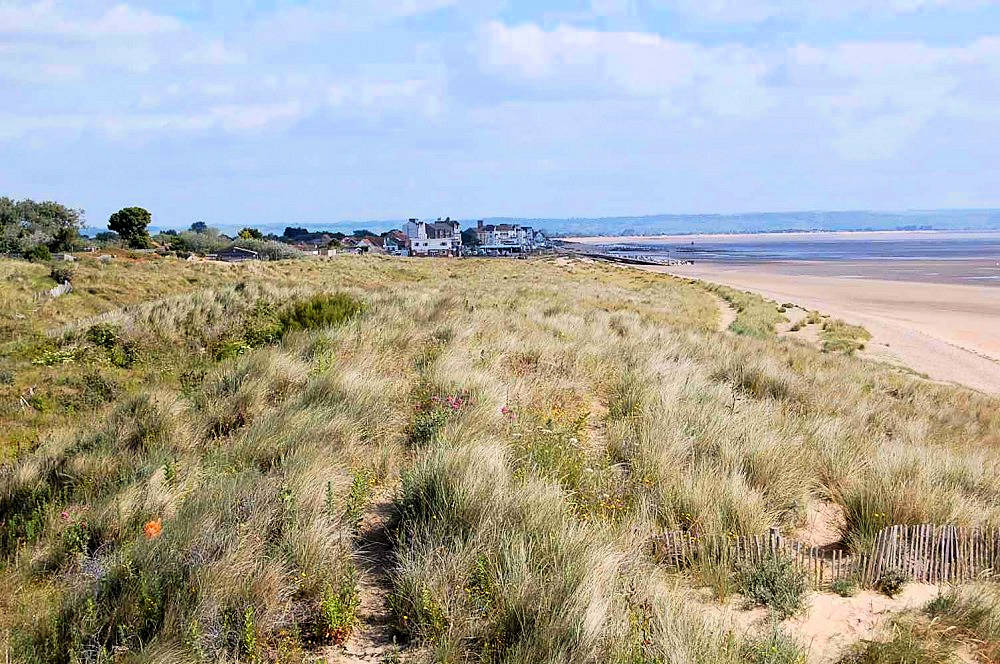
Greatston Sand Dunes
These coastal sand dunes develop by onshore winds blowing the sand in the intertidal zone - the area between the high and low tide marks. A key factor in their development is the presence of a sufficiently large beach whose surface dries out between high tides. The dry sand is then blown landwards and deposited above the high water mark, where it is trapped by specialised dune-building grasses which grow up through successive layers of deposited sand.
Sand dunes can be important ecosystems that support unique plant life and a healthy population of small animals and insects. Greatstone Dunes are a breeding area for the Brown Tail Moth Caterpillar.
Owned by Shepway District Council, Greatstone Sand Dunes are a Site of Specific Scientific Interest, with many rare species of plants growing there.
You can walk the Dunes as part of the  England Coast Path
England Coast Path
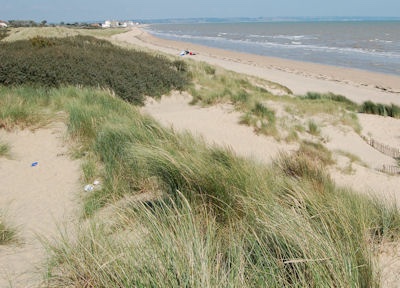
The Dunes at Greatstone
Management of the Dunes
Sea Buckthorn
Like the dunes of the Sahara Desert, the sand at Greatstone is constantly on the move, and various methods are used to stop it from shifting, especially where it is near roads and housing.
Sea Buckthorn has been planted in the past as it is excellent at stabilising the sand. Unfortunately, this prickly bush has spread over most of the dunes and is threatening the rare native plants that live here.
Since the winter of 2008 volunteers led by the Romney Marsh Countryside Partnership have removed two areas of buckthorn and such work will continue in 2016.
If you would like to help in the removal of the Sea Buckthorn and/or would like more information, please contact the Romney Marsh Countryside Partnership ![]() 01797 367934.
01797 367934.
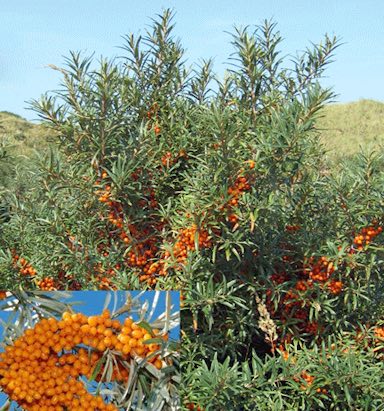
Sea Buckthorn on the Dunes
Fencing
Dunes are vulnerable to erosion by natural processes and by human activity. Shepway DC have, over the years, been using wood fencing to help protect and control the moving of the dunes.Construction of semi-permeable fences along the seaward face of dunes encourages the deposition of wind blown sand, reduces trampling and protects existing or transplanted vegetation.
A variety of fencing materials can be used successfully to enhance natural recovery. Fencing can also be used in conjunction with other management schemes to encourage dune stabilisation and reduce environmental impacts.
They have, in the last four years, installed such fencing along a stretch of the maximum high tide line, leaving access points to the various paths that cross the dunes. The location of this new fencing is such that it will cause the dunes to increase in size seaward to resolve the problem of them getting taller, which could potentially lead to them becoming unstable.
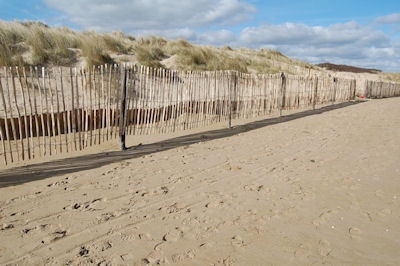
Dunes Fencing
Five Year Plan
The Romney Marsh Countryside Project was asked in Spring 2009 to produce a five year management plan for the dunes.
Owen Leyshon of the Project says " Getting the right balance between the human pressures and the wildlife is vital - with the main thrust of the proposed works over the next five years being to reduce the coverage of the prickly sea buckthorn in the dunes and to check the spread of the garden flowers which are throughout the dunes. Issues like dog fouling, fly tipping of garden material and access will also be addressed"
More Information
You can find out more about sand dunes at The Geography Site.
![]() Walks on the Sand Dunes
Walks on the Sand Dunes
![]() Greatstone Beach
Greatstone Beach
![]() Nature on Romney Marsh
Nature on Romney Marsh
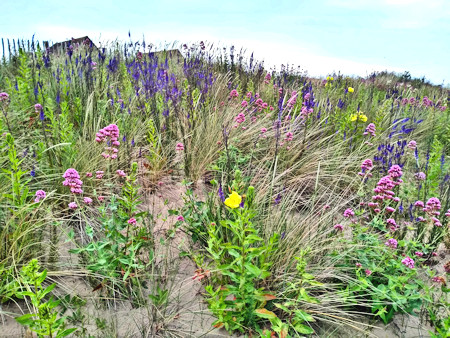
Sand Dunes in June


